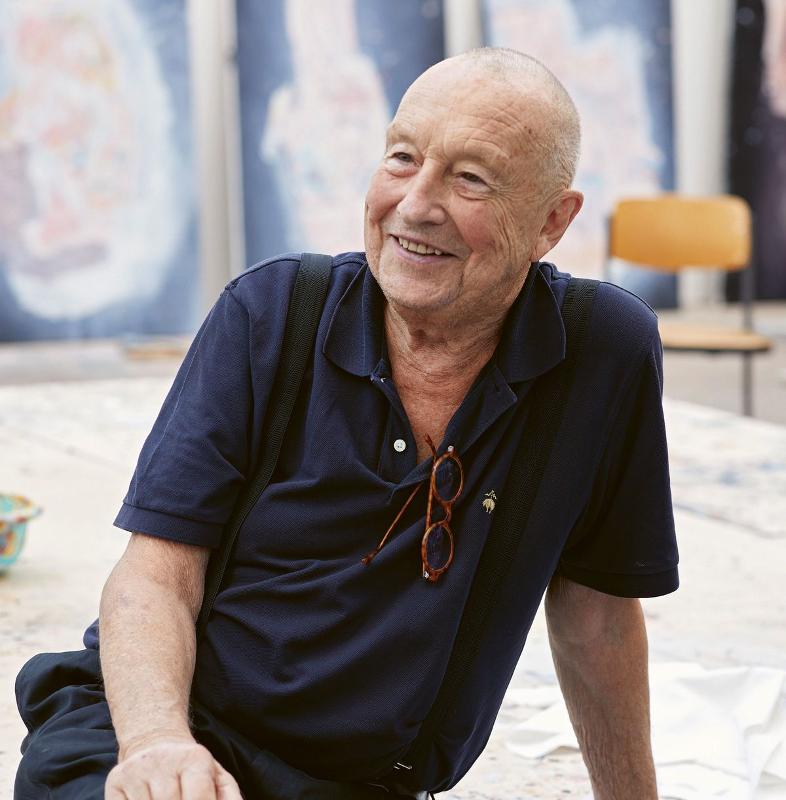Georg Baselitz, one of the most influential artists of his generation, has never shied away from controversy. Now, at 85 years old, he is showcasing his sculptures and sculpture drawings at the Serpentine. In this article, we delve into Baselitz's thought-provoking artworks, his use of wood as a medium, and the rich German tradition of sculpting. Join us on a journey through his latest exhibition and explore the artist's unique perspective.
Exploring the Provocative Art of Georg Baselitz
Discover the thought-provoking artworks of Georg Baselitz and his unique approach to art.
Georg Baselitz, known for his provocative art, has never been afraid to challenge conventions. His artworks often carry a biographical or autobiographical background, providing a glimpse into his personal experiences and perspectives. Baselitz's sculptures, currently on display at the Serpentine, offer a unique opportunity to explore his artistic journey.
With titles like Zero Dom, Baselitz's sculptures invite viewers to delve deeper into the German past and reflect on societal issues. These thought-provoking artworks spark conversations and push boundaries, making them a must-see for art enthusiasts.
Embracing the German Tradition of Sculpting in Wood
Learn about the rich German tradition of sculpting in wood and how Baselitz continues this legacy.
German tradition plays a significant role in Baselitz's artistic practice, particularly the tradition of sculpting in wood. Throughout history, German artists like Tilman Riemenschneider have created stunning wooden sculptures that have stood the test of time.
Baselitz sees himself as part of this tradition, drawing inspiration from the works of his predecessors. His choice to work with wood reflects a deep connection to his German roots and a desire to carry on the legacy of wooden sculpture.
Unveiling Baselitz's Personal and Political Sculpture Drawings
Explore Baselitz's sculpture drawings and their significance in his artistic process.
Baselitz's sculpture drawings offer a unique insight into his creative process. These drawings serve as important observations for working in three dimensions and shaping wooden trunks into sculptures.
While Baselitz has been creating sculpture drawings since 1980, the ones featured in this exhibition have never been exhibited before. They relate to his personal life, including childhood memories and experiences. Each drawing carries its own narrative, adding depth and meaning to Baselitz's overall body of work.
The Influence of Provocation in Art
Delve into the importance of provocation in art and its impact on artists like Baselitz.
Provocation has long been a driving force in the art world, pushing artists to challenge societal norms and spark conversations. Baselitz, known for his provocative statements and artworks, understands the power of provocation.
While being provocative for the sake of it may not have a lasting impact, Baselitz believes that provocation can be a catalyst for change and self-expression. It opens up new possibilities and encourages artists to think outside the box.
The German Art Scene: Challenges and Opportunities
Reflect on the state of the German art scene and Baselitz's perspective on its challenges.
Baselitz has been vocal about the challenges faced by the German art scene, particularly in comparison to other countries like the UK, the US, and France. He believes that Germany lacks a vibrant cultural scene and struggles to keep up with international standards.
While Baselitz acknowledges the existence of a well-functioning international art market that supports German artists, he hopes for more recognition and support within Germany itself. The art scene in Germany needs to evolve and embrace new perspectives to thrive.
Conclusion
Georg Baselitz's exhibition at the Serpentine showcases his thought-provoking sculptures and sculpture drawings, offering a glimpse into his unique artistic approach. Through his provocative artworks, Baselitz challenges conventions and sparks conversations about personal and societal issues.
By embracing the German tradition of sculpting in wood, Baselitz pays homage to his roots and continues the legacy of wooden sculpture. His sculpture drawings provide valuable insights into his creative process and personal experiences.
Baselitz's art reminds us of the importance of provocation in the art world, pushing boundaries and inspiring change. While the German art scene faces challenges, Baselitz's work serves as a reminder of the need for a vibrant cultural scene that embraces new perspectives.
As we explore Baselitz's exhibition, we are invited to reflect on our own perceptions and engage in meaningful conversations about art and its impact on society.
FQA
What is the significance of Baselitz's sculptures?
Baselitz's sculptures carry a biographical or autobiographical background, offering insights into his personal experiences and perspectives. They provoke thought and spark conversations about personal and societal issues.
Why does Baselitz choose to work with wood?
Baselitz draws inspiration from the rich German tradition of sculpting in wood. Working with wood allows him to pay homage to his roots and continue the legacy of wooden sculpture.
What can we learn from Baselitz's sculpture drawings?
Baselitz's sculpture drawings provide important observations for working in three dimensions and shaping wooden trunks into sculptures. They offer a unique insight into his creative process and personal experiences.
Why is provocation important in art?
Provocation in art challenges societal norms and encourages artists to think outside the box. It sparks conversations, pushes boundaries, and can be a catalyst for change and self-expression.
What are the challenges faced by the German art scene?
The German art scene struggles to keep up with international standards and lacks a vibrant cultural scene compared to countries like the UK, the US, and France. Recognition and support within Germany itself are areas that need improvement.

